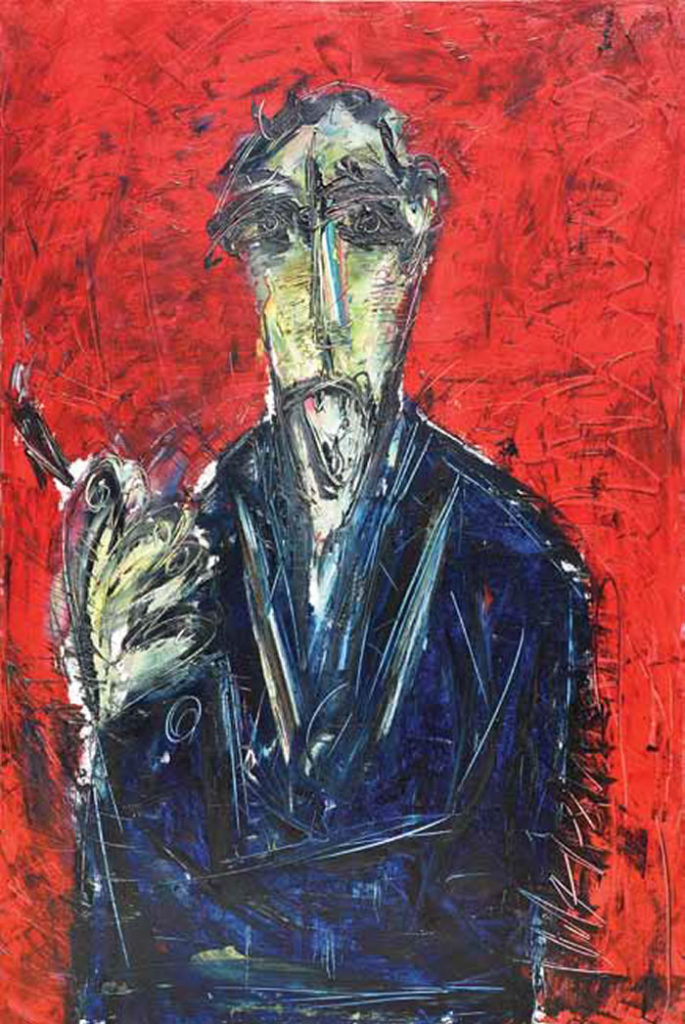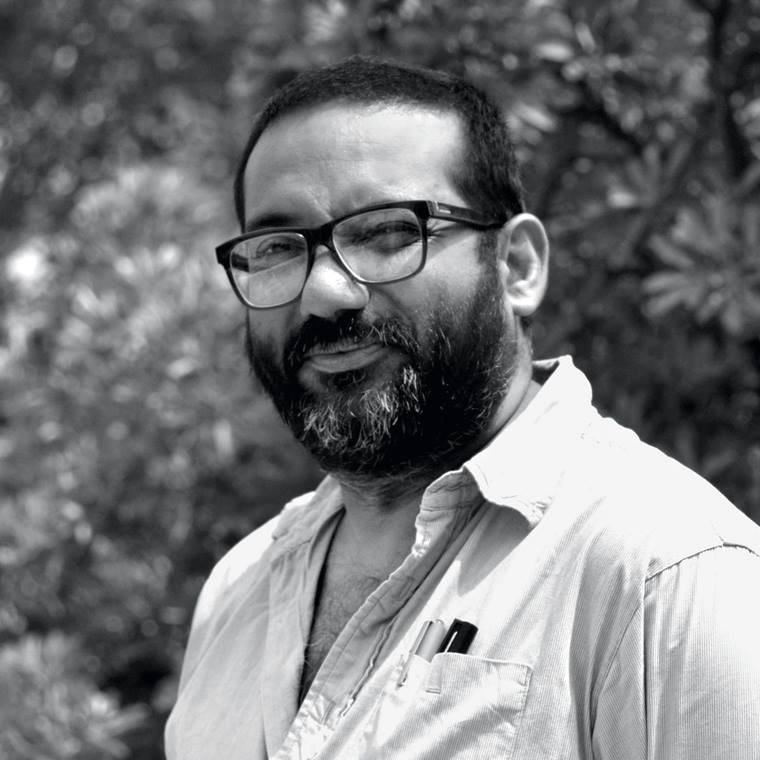
For most artists, sticking to one medium becomes a natural rhythm. But for Vikash Kalra, the journey of creativity doesn’t stop at the canvas. Renowned for his emotionally charged, abstract paintings, Kalra has recently turned his attention to a new medium—sculpture. This evolution marks not a change in direction but a deepening of his artistic expression, where the same spirit that once moved freely in brushstrokes now takes physical form in clay and bronze.
In this article, we explore how Vikash Kalra bridges the world of painting and sculpture, and how his transition from canvas to clay is both a bold step and a natural extension of his artistic philosophy.
A Painter’s Soul, A Sculpture’s Hands
Kalra’s background in painting laid the foundation for his distinct visual language—rooted in emotion, spiritual inquiry, and the raw edges of human experience. His canvases pulse with energy: jagged lines, smudged figures, fragmented forms, and colors that don’t sit still. They are less about depiction and more about inner expression.
So, when he began working in sculpture, it wasn’t about starting over. It was about pushing that visual language into three-dimensional form. The same restless energy that once danced on canvas now finds a new rhythm in clay—solid, grounded, and tactile.
Unlike painting, which lives in the eye’s movement across surface, sculpture demands physical engagement. The artist doesn’t hover above the work; he becomes part of it, kneading, pressing, shaping. It’s a medium of presence, and for Kalra, that presence is spiritual.
Translating Abstraction into Form
One might wonder—how does an abstract painter approach sculpture? Kalra does not abandon abstraction; he translates it. His sculptures are not traditional busts or figurines. They live somewhere between abstraction and figuration. Elongated forms, hollowed-out torsos, distorted limbs—they don’t describe reality but evoke emotion, memory, and myth.
In fact, many of Kalra’s sculptures feel like his paintings have stepped into the physical world. The bold gestures of his brush become exaggerated silhouettes in clay. The fragmented bodies seen on canvas emerge as contorted sculptures—sometimes haunting, sometimes serene. This continuity between the two mediums allows viewers to walk into the very space Kalra once only hinted at on canvas.
Material as Meaning
Kalra’s sculptural material of choice is often clay, though some works have also been cast in bronze. Clay carries an ancient resonance. It’s the same earth humans have used for thousands of years to tell stories, worship gods, and bury their dead. In Kalra’s hands, clay becomes a medium of memory and transformation.
It’s not polished or pristine. His clay sculptures often retain the marks of his hands—the indentations, the textures, the rawness. They are not about perfection; they are about truth. Each piece holds the energy of its making, reminding us that art is a process, not a product.
Bronze, when used, adds a layer of timelessness—preserving the vulnerability of clay in something enduring. But even in metal, the human touch remains visible. Kalra ensures that no matter the medium, the soul of the work stays intact.
Themes that Echo Across Mediums
Whether on canvas or in sculpture, Vikash Kalra’s themes remain consistent. He is drawn to:
The fragmented self: His figures, often broken or incomplete, reflect the fractured nature of identity in a chaotic world.
The sacred and the profane: Kalra’s work straddles the spiritual and the earthly. His figures can feel like saints, seekers, or simply broken humans searching for light.
Time and impermanence: Cracks, distortions, and erosion are part of his sculptural language, reminding us that everything is in flux.
Solitude and silence: Many of his figures seem lost in meditation or reflection—embodying an inner stillness despite their rough exteriors.
These themes create a profound sense of continuity in his work. Even as the medium shifts, the message remains clear: to explore what it means to be human—fragile, searching, soulful.
Sculpture as Meditation
For Kalra, sculpture isn’t just about aesthetics—it’s a spiritual practice. The act of sculpting is slow, grounding, and repetitive. It allows for introspection, silence, and connection. It’s a way of listening—to the material, to the self, and to something greater.
He often speaks of the meditative nature of working with his hands—how shaping clay feels like shaping thought. In a world of distractions, the studio becomes a sacred space, and the act of making becomes a kind of ritual.
This energy is evident in the final works. Kalra’s sculptures don’t shout. They invite. They wait. They hold space.
Exhibiting the Third Dimension
As Kalra’s sculptural body of work grows, his exhibitions have evolved into immersive experiences. Where his paintings once guided the eye, his sculptures now guide the body. Viewers move around and between the pieces. They bend to look closely, walk around to see hidden angles, or stand back to take in the presence.
In these spaces, light, shadow, and silence play an essential role. The forms cast long shadows. The texture catches the light differently with each step. It’s a conversation between form and emptiness, between what’s seen and what’s felt.
Inspiring a New Dialogue
Kalra’s journey from canvas to clay also opens doors for contemporary Indian art. At a time when many artists are boxed into categories—painter, sculptor, digital artist—Kalra defies such limitations. He shows that an artist’s vision is bigger than any medium.
His work inspires younger artists to be fearless, to cross disciplines, and to stay rooted in their inner voice rather than external trends. His commitment to authenticity over marketability, expression over decoration, stands as a quiet revolution in a commodified art world.
Conclusion: An Ongoing Journey
For Vikash Kalra, art is not a career—it’s a calling. Whether he paints on canvas or sculpts in clay, he is reaching for the same thing: truth, connection, and transcendence. His transition from canvas to clay is not an escape from one form, but a deepening into another—a new language to tell the same timeless story.
In the textures of his sculptures, in the silence of their forms, we find the echo of his paintings—and the heartbeat of a creator who never stops evolving.

Vikash Kalra is a self-taught artist and writer based in New Delhi whose work has been exhibited across India and is held in several private and corporate collections.